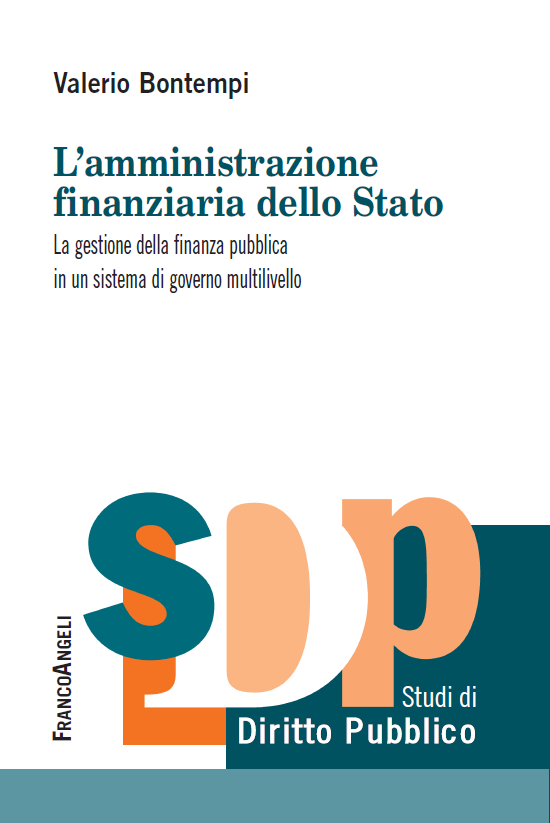Valerio Bontempi (University of Tuscia)
How has the financial administration of the state changed over time, and how has he adoption of new fiscal rules across the EU affected the ability of individual member states to control the public purse? These questions are answered in my new book, The Financial Administration of the State (in Italian) which offers a study of the functional and organisational structures of the Ministry of Economy and Finance (MEF) in Italy. It is a study that aims to capture not merely the static profiles, but also – and above all – the dynamic profiles of this Ministry. It is not a mere snapshot, therefore, but rather a resumé in motion of this peculiar machine of the Italian State, from which both the functioning of its various cogs (functions, organisation, procedures, resources) and its ramified interactions with other institutional subjects of the national and European order can emerge. To this end, the book is divided into five chapters.
The first chapter is an introduction and offers a historical reconstruction of the MEF. It traces the tortuous vicissitudes of the financial administration from the reform of the central state administration ordered by Cavour in the mid 19th century (Law No 1483/1853) to the so-called Bassanini reform at the end of the last century (Legislative Decree No 300/1999). The historical analysis is conducted in such a way as to bring out the political and legal reasons that gradually determined the numerous splits and reunifications of this administrative apparatus and that finally led to the birth of the MEF as we know it today.
The second chapter is devoted to the multiple and – to some extent – heterogeneous functions of the Treasury Department. In detail, it analyses the powers relating to the economic-financial planning cycle, the management of the public debt and the regulation and active supervision of the financial system (including the management of banking crises and financial interventions in the economy to support businesses and households), as well as the powers relating to the valuation and disposal of public real estate assets and the management of State shareholdings and privatisation processes.
In the third chapter, we focus on the two macro-functions held by the Department of the State General Accounting Office and which are inherent to the area of budgetary policies, in relation to which the activities of drafting and coordinating the budget law and related measures, as well as the verification of public finance trends, are carried out.
The fourth chapter analyses the two homogeneous groups of functions that the Department of Finance is called upon to perform. These are the analysis, formulation and evaluation of tax policies and the supervision and control of the activities carried out by the tax agencies.
The fifth and final chapter contains concluding reflections which, by taking up the analyses carried out in the individual chapters and systematising the results achieved, attempt to answer the research questions from which the present work stems.
The conclusion I reach at the end of my book is that in recent years we have witnessed a vertical dispersal of economic, budgetary and fiscal policies both downwards (the system of local autonomies) and upwards (the supranational order).
In the literature it is usually said that, since the Maastricht Treaty of 1992 and later with the Stability and Growth Pact of 1997, there has been a ‘flight of decisions’ from the state to the European Union with regard to the size of the budget power. This is now beyond the control of the Member State, which can no longer freely increase expenditure through recourse to public debt. The state is bound by European budgetary constraints. These constraints have become even more stringent with the changes to the Stability and Growth Pact introduced in 2011 by the so-called Six Pack of EU legislative measures and subsequently with the Fiscal Compact treaty of 2012.
The analysis carried out in my book has made it possible to observe how, however, the process of European integration has more recently reduced (although clearly not eliminated) discretionary power even with regard to the allocative part of national budgetary power. In fact, the economic-financial policy objectives pursued through the end-of-year budgetary manoeuvres must be agreed upon in the context of the so-called European Semester. Through the budget planning document, the European legislature exercises, inter alia, control over the actual correspondence between the Economic and Financial Document and the Update Note to the Economic and Financial Document, on the one hand, and the draft budget law, on the other, as well as intervening effectively in the event of ascertained inconsistency.
It follows from these considerations that the absence of any margin of discretion as to the quantitative part of the budgetary power and the indissoluble link that has been created between the planning cycle and the budgetary cycle – a link that inevitably affects the allocative aspects of financial activity – make the ownership of the budgetary function a ‘mixed’ ownership between the European and national actors.
Valerio Bontempi is Research Fellow in Administrative Law at University of Tuscia (Viterbo, Italy). He holds a PhD in Government and Institutions from the University of Roma Tre, where he is lecturer of Economic Analysis of Law. He was a postdoctoral fellow at LUISS Guido Carli, Research Assistant at Scuola IMT Alti Studi Lucca and Visiting Researcher at Max-Planck-Institut für ausländisches öffentliches Recht und Völkerrecht (Heidelberg, Germany).
Photo Credits: FrancoAngeli
The views expressed in this blog reflect the position of the author and not necessarily that of the Brexit Institute Blog.



